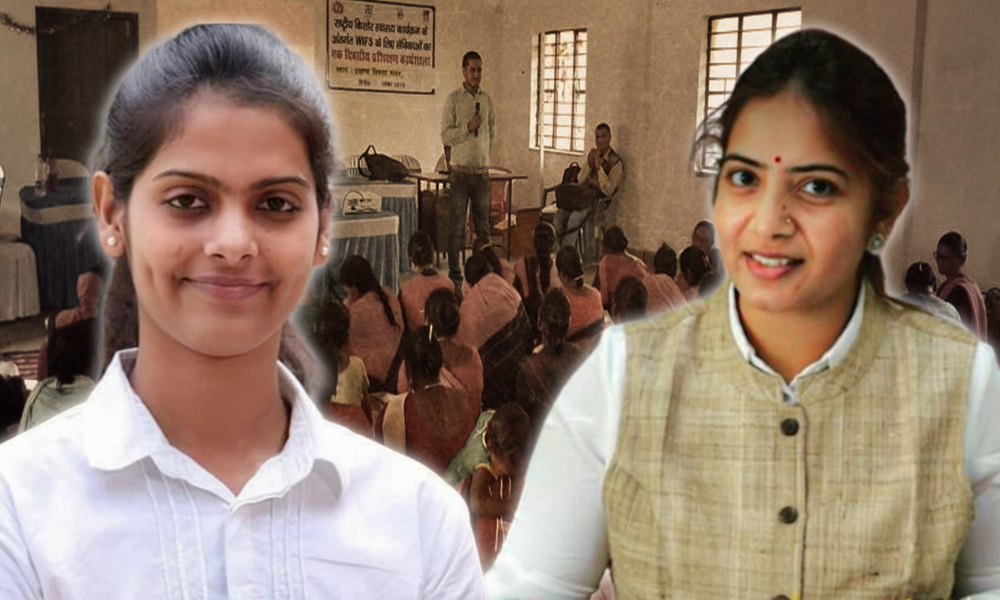
This IAS Officer & Her Team Are Going Beyond Duty To Provide Livelihood To Dumka's Paharia Tribe
Jharkhand, 4 July 2020 6:31 AM GMT | Updated 29 July 2020 12:32 PM GMT
Creatives : Vijay S Hegde
I am a creative, artistic and ambitious designer, with a talent for thinking outside the box and coming up with innovative ideas and designs. I graduated with a 1st Class honors degree in Video Editing from MAYA ACADEMY OF ADVANCED CINEMATICS
The Aspirational District Fellows (ADF), Dumka, appointed by the Tata Trusts for the Transformation of the Aspirational District Programme (TADP), spearheaded the initiative and facilitated the district administration at the various stages of this process under the guidance of the Deputy Commissioner.
`Believed to be the earliest inhabitants of the region, Paharia once ruled the hills of present day Santhal Pargana division in Jharkhand. Today, they are a Particularly Vulnerable Tribal Groups (PVTGs) with low literacy (24.75%), declining population and economic backwardness.
Mal Paharia, a sub-tribe of the Paharia Tribe is the major PVTG inhabiting the district. Their population is around 31,550 and is spread across 610 villages in the 10 blocks of the district.
The tribe has a symbiotic bond with the forest for their bodily and cultural survival. They don't own agricultural land and decline in access to forests has increased their vulnerabilities.
Inclusion In Planning Process
The Deputy Commissioner, Dumka, Ms. Rajeshwari B (an IAS of the batch 2010) strongly believes in the Bottom Up planning process. To translate this vision into the reality, a Need Assessment exercise was proposed.
The Need Assessment was conducted using the Participatory Rural Appraisal (PRA) techniques in 57 of the total 62 Paharia villages of Block Gopikander to understand the gaps in the infrastructure and delivery of services to the community in order to ensure the basic Minimum facilities.
The Aspirational District Fellows (ADF), Dumka, appointed by the Tata Trusts for the Transformation of the Aspirational District Programme (TADP), spearheaded the initiative and facilitated the district administration at the various stages of this process under the guidance of the Deputy Commissioner. The main focus was to build a contextual understanding with respect to socio-economic life of this PVTG.
What made this engagement even more optimistic was the idea of the district administration to "take itself to the people, if people couldn't". Following is a narrative of the inclusion process in 32 Villages, where Ms. Sushmita Jha, Aspirational District Fellow coordinated the exercise.
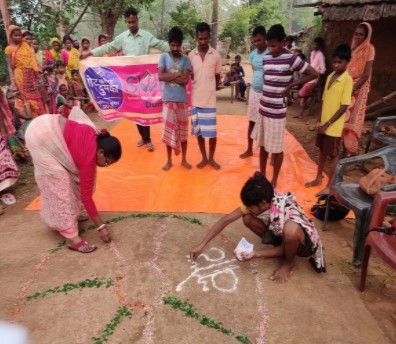
Various Participatory Rural Appraisal (PRA) techniques like, Village Resource Mapping, Social Mapping and Focused Group Discussions (FGD) were used. A questionnaire was developed to facilitate the FGDs and the information were collected exhaustively on the social factors like Education and Health, livelihood sources, basic infrastructure facilities like road, electricity, drinking water, social spaces(e.g. chabootra), service delivery under welfare schemes like Dakiya scheme (PDS), Aayushman Bharat, Awas Yojna, scholarships, Ujjwala Yojna and ICDS .
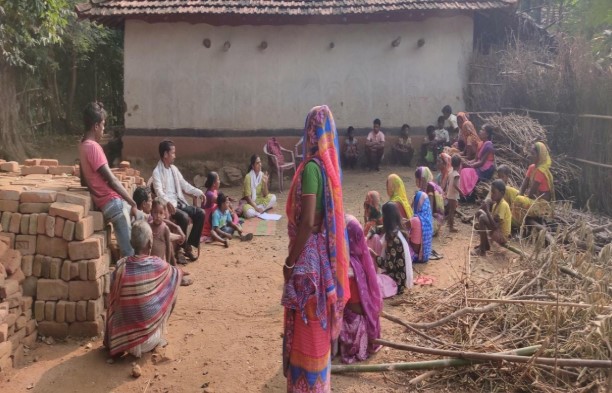
The Participatory exercise brought out many hidden demands and the avenues of the localized livelihood.
To begin with, one of the most deprived Paharia villages "Peepar Joriya" was selected and a Janta Darbaar (Prasashan Aapke Dwar) was organized by the District Administration in this village.
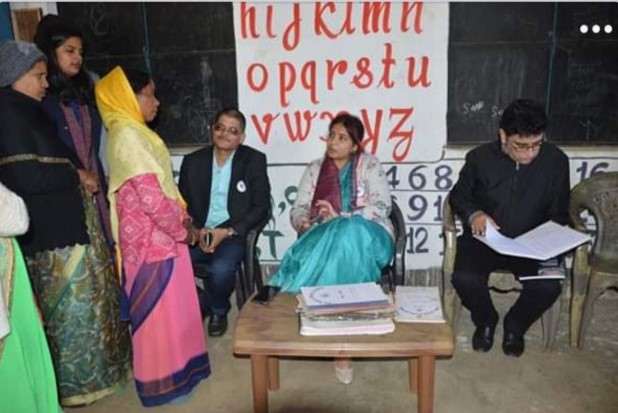
The Block Development Officer (BDO), Gopikander, ensured that the most pressing demands are fulfilled immediately. A camp was organized for providing the ration card, cylinders, electricity connection to the left out beneficiaries.
Enrollment was done under the pension schemes, PM-KISAN, Ayushman Bharat. Construction work for the road was started. Drinking water facilities were enhanced with special focus on the installation and maintenance of the solar drinking water infrastructure.
Maintenance/refurbishment of Anganwadi Centers (AWCs) was taken up and the AWCs were provided with the Gas and cylinder connections as most of the AWCs in these villages cooked food on "Chullah".
Malnourishment (Severely Acute Malnourished (SAM) and Moderately Acute Malnourished (MAM)), among the children especially from this PVTG, has been the major focus area of the Deputy Commissioner.
Thus considering this need, as an Aspirational District Fellow (ADF), she along with the various other departments like District social welfare (DSW), Horticulture, Agriculture, Education and Health are collaboratively working towards starting the Kitchen Garden in a phase wise manner at the Anganwadi Centers (AWCs).
The district administration and the Civil Society Organizations like Child In Need Institute (CINI) and World Vision have been conducting the workshops for capacity building of AWC workers with the special focus on their engagement in identifying SAM/MAM children from the community and referring them to the Malnutrition Treatment Centers (MTCs).
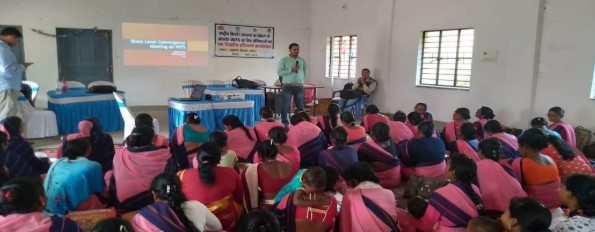
Livelihood
Plate making from Sakhua (Sal) leaves is common to all households. There's a huge scope of increasing the productivity and diversifying the products. There's a scope of Sericulture, Mat making and other handicraft products from "khajoor patta" (Palm leaves), horticulture (vegetables and fruits), "Khajoor Gur"(Palm Jaggery) production (the traditional resource which at present is being explored and used by the people coming from the other states like Bengal)
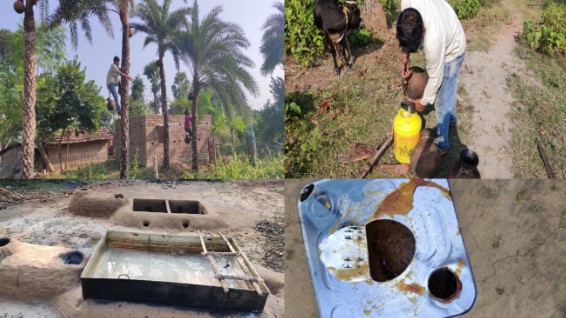
These local avenues of livelihood have now become even more relevant amid the COVID-19 pandemic. The Jharkhand State Livelihood Promotion Society (JSLPS), Dumka worked on integrating some of these (for instance, sal leaf plate-making activity in few Paharia villages) with livelihood programme run under the Van Dhan Vikas Karayakaram (VDVK).
The JSLPS, the Kutir Udyog department and the Industries Department, are collaboratively exploring the scope of installing machinesto increase the productivity and also on the scope of providing training for the same to the Paharia community. Administration is also collaborating with various other organizations like ESAF, which is majorly engaged in bamboo handicraft to explore such scopes in this Paharia community.
Additionally to mobilize funds under the "Gramotthan Yojna" of the state, the Integrated Tribal Development Agency (ITDA, Dumka) used and incorporated the observations made from the field for these villages which ensured a comprehensive development Plan for the selected Paharia Villages. Women in the organisation ESAF, Dumka, engaged in making handicraft products from palm leaf.
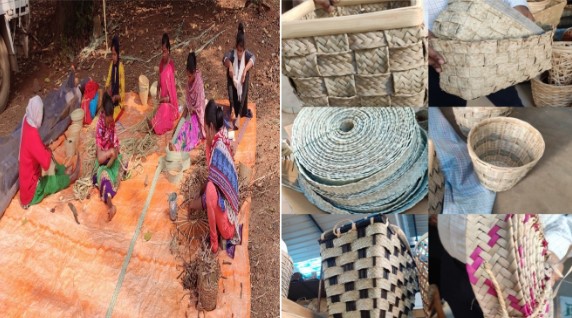
Amid this COVID-19 Pandemic, considering the population and distance of these Paharia villages, a mapping was done. Based on that the "Didi Kitchen" centers were opened with special focus on covering these PVTG villages, by the JSLPS, Dumka, to provide free meals. On an average, 500-550 beneficiaries of PVTG (Paharia Tribes) are being covered every day by the Didi Kitchen.
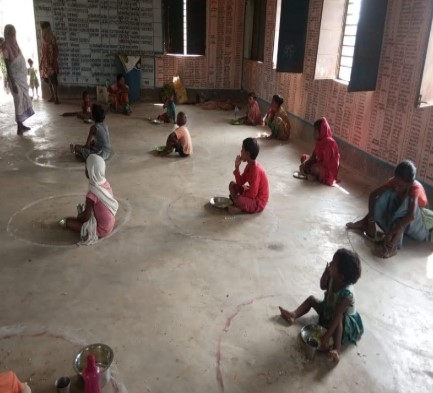
Mainstreaming is often confused with the adoption of the way of life of the "majority". But this way, we tend to undermine the uniqueness of the indigenous way of life. We need to embrace their uniqueness and respect their perception of development. This inclusion process adopted for the Paharia Tribe is a small effort towards the greater goal of the development of the community.
Also Read: 'Bank At Your Doorstep': How Giridih District Administration Is Improving Access To Cash
 All section
All section














